* (restored)

‘The cinema of Pierre Clémenti resists easy comprehension in much the same way its maker resisted society
‘Perhaps best known for his role in Luis Buñuel’s Belle de Jour, Clémenti the actor was also an ardent creator who sought to explore cinema’s intrinsic connection with the subconscious, a relationship often made literal in his distinctly, deliberately avant-garde works. Hindsight sees these films as distinct creations of their time, ready to be dismissed by those who see only the counterculture elements long since rendered cliché. Treading arguably pretentious and fatuous grounds, Clémenti’s smorgasbord utilization of sight and sound demands one engage it on its own ever-shifting terms, which routinely break the fourth wall and were surely made with the intention of being experienced under the influence. Viewed sober, his films (considered here are four works: Certificate No. X, New Old, In the Shadow of the Blue Scoundrel, and Soleil) remain trips whose nature transcends traditional designations of good or bad; as if finally escaping a hazy, disorienting fog, the only word I could use to describe them is essential.
‘Certificate No. X is broken up into two separate works that, while bearing separate names, Visa de Censure No. X and Carte de Væus, and filmed eight years apart (1967 and 1975, respectively), render what appears in context to be a seamless whole. Seamless, however, is hardly a word to use in describing a viewing experience that makes everything from Un Chien Andalou to Inland Empire look relatively straightforward by comparison. Commencing with the image of a nude man (Clémenti himself, a regular in his films) exiting the mouth of a cave (Plato’s, perhaps?), Visa de Censure quickly lobs the viewer into a tailspin of psychedelic imagery both thrilling and exhausting. Images of war, religion, oppression, and frank nudity are interspersed with a stylistic freefall of strobe lighting, camera filters, layered shots, and scoping effects, among others. The effect is less powerful in any given instance than it is as a cumulative, primordial mood piece, though several key images leave a lasting impression (a face is juxtaposed over simmering flames, a man “plays” a woman with a violin bow, etc.). Steadily, a theme of broad enlightenment emerges: Obsession with circles gives way to eyes and spectatorship, and the film wordlessly speaks to the necessary union held between the art, the artist, and the viewer.
‘The smooth transition into Carte de Væus suggests a deliberate comedown from the preceding hysteria. Warm images aplenty (including the face of a girl Clémenti was obviously enamored with, at least as a subject) don’t negate the heavy lifting, however, a quality humorously acknowledged by the image of a white bunny being forcibly pushed along toward the inevitable rabbit hole. Coming on the heels of Visa de Censure No. X, an experience that initially suggested the freak-out sequences of Ken Russell’s Altered States, Carte de Væus is something singularly unique, and Clémenti pulls out all the stops in establishing a self-serving mythological tone (the same can be said for all of his works to some extent). Words flash across the screen as additional mood enhancers atop images as far ranging as that of an animated skiing penguin and an impromptu shot of a vagina. As art goes, the entire Certificate No. X is most certainly fubar. It’s up to each viewer, I suppose, to determine whether that’s a good thing or not.
‘New Old, from 1979, is described as Clémenti’s autobiography, but viewers hoping for something more narratively straightforward might be disappointed to instead find a work merely somewhat less diffuse than its predecessor(s). Assembled from the approximately 15 hours of footage Clémenti shot during a self-described nomadic existence (carefree frolicking, streaking, and dancing abounds), the hour-long feature bears witness to an unflinching life of exploration complete with an ongoing creative struggle and insatiable longing for truth. The framing device of a writer at his typewriter is both appropriate and, scantly returned to, only vaguely literal. New Old‘s bombardment is more controlled and, ultimately, more scintillating than Certificate No. X‘s everything-but-the-kitchen-sink approach, tapping into a dreamlike euphoria as it utilizes similar techniques with greater focus as well as a number of devices from the silent era’s bag of tricks (the use of a negative shot recalls Nosferatu, but a simple effects shot involving Satan on a beach is my favorite). The film doesn’t end so much as eventually wind down, affirming the work of an artist as a lifelong endeavor. The words of Robert Altman hover about the proceedings: “Retirement? you’re talking about death, right?”
‘The closest Clémenti ever came to making a traditional film was In the Shadow of the Blue Scoundrel (shot and assembled from 1978 through 1985), a noir-ish tale of social dystopia and political espionage, the subversions of which are probably all the greater for their relatively straightforward presentation. Placed in the fictitious Necro City and starring Clémenti as the city’s military leader General Nutsbody, Blue Scoundrel is less stylistically assaulting in composition, but its ramshackle appearance (fish eyed lenses, over- and underexposed images, cheap effects and makeup, etc.) are both oddly poetic and appropriate to the storyline, suggesting that the film itself is the product of revolution. Amid a plot involving drugs, murder, and hidden motives, what stands out is the voiceover used to increase dramatic momentum, while the looping used for dialogue, while probably a budgetary necessity, further suggests that the film is little more than its maker’s id poured directly onto the screen.
‘For an artist so purely guided by creative self-actualization, it seems obvious that his final work, the short film Soleil, would be his masterpiece. Released in 1988 (11 years before his death at the hands of liver cancer), it is a breathless outpouring of exquisitely rendered philosophical rhetoric comprised more of questions than answers, delivered here in the form of a stream-of-consciousness voiceover set to personally and politically appropriate imagery. In its dogged quest for truth, it encapsulates an entire worldview, and to attempt to further put the experience in words would be both futile and an affront against its purity of essence. The use of footage from the previous three films shows an artist both resourceful and daring, one who cares not what you think of him, only that he might force you to truly think in the first place.’ — Rob Humanick, Slant Magazine
____
Stills

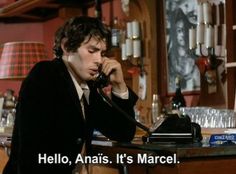

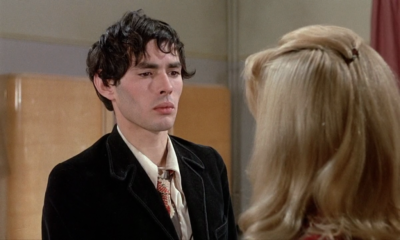
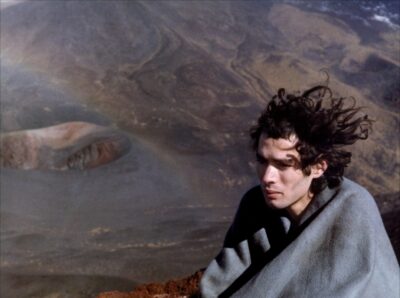
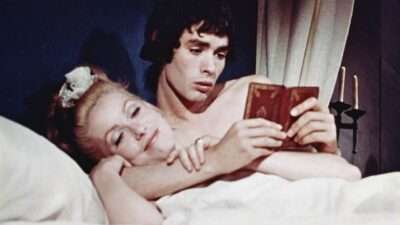




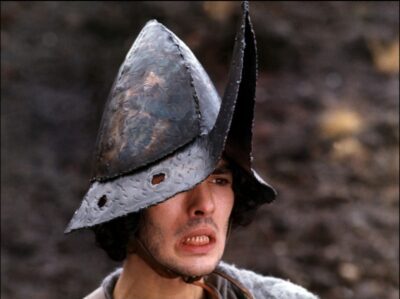

















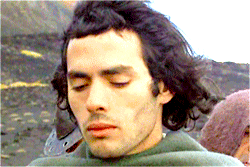








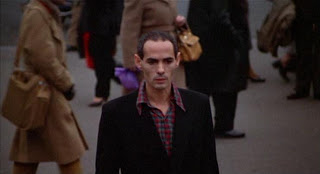








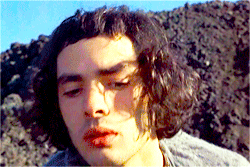












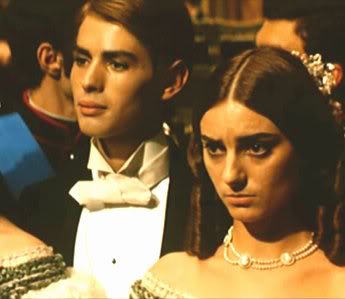



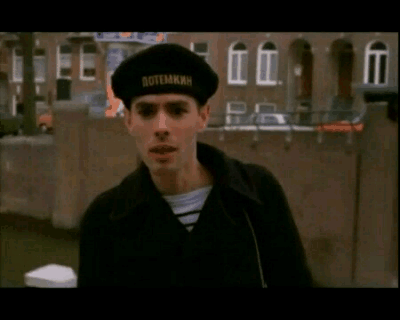


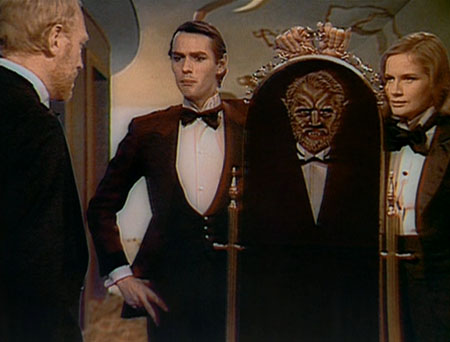
















____
Further
Pierre Clément @ imdB
Blow up – Pierre Clémenti par Ange Leccia
PIERRE CLÉMENTI: THE UNRELEASED REELS
Hommage à Pierre Clémenti
PIERRE CLÉMENTI TRAVERSE LE MIROIR.DANDY DESTROY, ACTEUR REBELLE DE BUÑUEL ET PASOLINI, IL S’EST ÉTEINT À 57 ANS.
SEDUCED BY PIERRE CLÉMENTI
¡Encerradlos a todos! Pierre Clémenti
Pierre Clémenti | Rapporto Confidenziale
Pierre Clémenti: Un acteur engagé au cinéma comme dans la vie
The Passion of Pierre Clémenti: European cinema’s christ-devil child
Pierre Clementi Fan Site 1 (French)
Pierre Clementi Fan Site 2 (French)
Pierre Clementi entries @ CinebeatPierre Clementi Facebook Page
Cinememorial: Pierre Clementi
The CV of PC’s son Balthazar Clementi
____
Extras
P.Clementi J.P Kalfon B.Ogier on LSD FREAKBEAT PSYCH
Pierre Clementi, l’absolue liberté (extrait avec Philippe Garrel)
Pierre Clementi’s Grave
_____
Conversation between Pierre Clémenti, Miklos Janscó, Glauber Rocha and Jean-Marie Straub (1970)
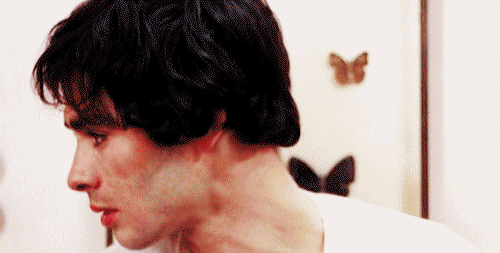
Pierre Clémenti: When people discover cinema, they will change, creating their own cinema.
Jean-Marie Straub: And that’s exactly why they’re not allowed to find out at the moment. Because those bastards smell good, they have a good sense of smell. And it is also because of this that it is dangerous for intellectual critics to start saying that we are making films for a minority, etc. They line themselves up with this prohibition. But when the people – I don’t like the word “masses” – discover cinema, then something will happen…
Miklos Jancsó: It’s almost the same betrayal as when intellectuals were confronted with Nazism. It is clear that the critics, the intellectuals, are on the side of…
Straub: Unconsciously. Without realizing it, they support the system by spouting the same old nonsense…
Clémenti: When people see a film, they experience a sort of identification, they are influenced by the star of the film. I think that when people start filming with their own cameras, when they point them at their families, their homes, their jobs, something will click in their heads, they will discover that in films there is nothing see …
Straub: They’ll find that everything shown in the movies is completely irrelevant, it’s just rhetoric. Rhetoric that turns into a complete void. What I call “pornography”. People are going to find that under the name of “art” it’s pornography thrown in their face, that commercial cinema is nothing but rhetoric, pornography, illusion.
Glauber Rocha: This terrorism directed against cinema is unfortunate. Unfortunately the moment when we classify a film as “artistic”. Because nobody talks about “artistic” paintings, or “artistic” novels, or poems – but they talk about “artistic” films. This is already a pejorative judgement… And contradictions end up emerging from this terrorism that has been imposed for reasons of economic interest. And then there is something even worse: the total ignorance of producers and managers. They are completely illiterate – not all of them, but 99% of them. They don’t know the basics of how things work…
Jancsó: No, that’s not it. For these people, cinema is a completely different thing. It’s power, it’s…
Clémenti: For people, cinema is what they don’t see on TV. As TV brings them what they usually find in the cinema, sooner or later they won’t move from home. They will go directly to the factory. Television will be the new divine machine that will satisfy them, that will satisfy all their desires. Cinema will disappear. It’s a possibility, because I’m sure if very smart people get hold of TV, it will become something very powerful, fabulous, colossal. When TV regains all its power, everyone, everyone who works will be taken back to their ghetto. It will alienate entire nations, people will no longer go out except to go to the factory – they will be completely alienated by a machine, which will take the place of religion, stories, big stories. I believe that the only art capable of combating this today is cinema. At least cinema as a logical extension of what is happening today.
Hartog: A lot of young people today are making films outside of industry structures. They argue that the idea of a 90 minute film is a commercial idea. They do underground movies or newsreels or things like that. Do you think this is a good direction or not?
Clémenti: When people see an underground film, they suddenly realize that they could do the same, or even better. And that’s the stimulus it takes to make them buy a small camera. These young filmmakers who spend one or two years finding the money to finish their films… A super 8 or 16mm camera allows them to make the film they want, and just for that, underground cinema is revolutionary. And underground cinema also has something positive in that it awakens something in people’s minds.
Rocha: I generally agree with Pierre, but there are two ways of seeing cinema. One as a means of expression, like literature, to which everyone has access, and the other as a profession. When cameras are as easily purchased as typewriters or pens, people will use sights and sounds to write letters. But in literature, there are those who write poems, essays, novels, plays… Me, I’m a professional.
Straub: And that’s exactly why I wanted to make my last film (Othon, 1970) in 16mm. Just to show that it’s not someone who plays such and such a role in the cinema, but that anyone can do it. It’s not complicated – anyone could have made a film like this.
Rocha: You absolutely have to see this film. Its very important. It’s an evolution of technology…
Straub: There was no set – we shot everything on location. The only danger of underground cinema is that it is underground cinema. There are already trusts and monopolies planning to grab hold of it, transform…
Clémenti: But it has already happened. Books are over. Books will disappear to make way for libraries of super 8 films. In America now there are super 8 cameras that develop 1000 ASA and are inflated to 35mm. So I am convinced that the film industry will completely change, and that it will expire…
Straub: It will colonize the underground…
Rocha: You can’t show an underground movie on Broadway, the same way you can’t bring a Hollywood movie to American campuses. Because the underground market is already there…
Clémenti: On all American campuses, you can show underground films.
Rocha: But, you see, it’s already a system, an industry…
Clémenti: It is an alternative society which is only at the beginning, and which attacks the system – whether it is positive or negative does not matter. So far, it’s positive…
Rocha: No, at the moment I feel like everything is against Hollywood. It’s very positive…
Clémenti: I think giants like Paramount are falling apart right now. Because of what ? Because people have made low-budget movies and made millions. The big studios don’t know what to do anymore. They are finished.
Rocha: But I feel that the crisis in American industry is only illusory, and that underneath they hold everything very well…
Clémenti: No, American cinema is screwed…until it finds, reinvents a filmic language. But under the current conditions, all the major studios are disappearing.
Straub: They’ve been screwed for five years. And it will take ten more for them to let go.
Jancsó: This is a very serious problem for us – we are always bothered by international distributors. It’s true, it’s obvious. I don’t know what we can do, something has to be done. We must destroy…
Rocha: At the end of the day, it’s a political problem.
Clémenti: At the moment I can tell you that we are making ten million copies from a single recording, and there will be…
Rocha: Next year, with the arrival on the market of cassettes, there will be a distribution system for films on the same model as books.
Clémenti: Yes, there will be such a system, but only for films to be consumed, that is to say films that have contaminated everyone, all of human nature. More and more cinema is becoming an enterprise of cretinization. Except for the cinema linked to film clubs and that sort of thing, where everything that is projected is completely useless, where the sound is not heard, where the image is painful, the copies are terrible. For what ? Because young distributors don’t have the money to make good copies or don’t believe in it. And so we will have libraries of Super 8 films, with millions of copies of each. I think it’s the end of the film industry… There have been all these revolutionary upheavals. The cinema in France is more and more alienated, in harmony with television, with the TV channels. And I have the impression that the cinema which tries to relate to people, to change their consciousness, will be put aside. The worker who wants to buy a book will buy a film. But it will be circumscribed, because society knows very well that…
____________
28 of Pierre Clementi’s 111 films
_____________
Luchino Visconti The Leopard (1963)
‘Luchino Visconti’s The Leopard (Il Gattopardo) is an epic on the grandest possible scale. The film recreates, with nostalgia, drama, and opulence, the tumultuous years of Italy’s Risorgimento—when the aristocracy lost its grip and the middle classes rose and formed a unified, democratic Italy. Burt Lancaster stars as the aging prince watching his culture and fortune wane in the face of a new generation, represented by his upstart nephew (Alain Delon) and his beautiful fiancée (Claudia Cardinale). Awarded the Palme d’Or at the 1963 Cannes Film Festival, The Leopard translates Giuseppe Tomasi di Lampedusa’s novel, and the history it recounts, into a truly cinematic masterpiece.’ — The Criterion Collection
Trailer
Excerpt
______________
Luis Bunuel Belle de jour (1966)
‘He had a legend, the aura of genius, a friend to the mysterious and the strange. I arrived full of holy terror and mad hope all at the same time. I was struck immediately by one thing, only one: he’s a man of whom you only see the face. The fabulous mouth, worked by life, heavily wrinkled skin, the driven eyes, but in their black ring, a sparkling light. I was incapable of saying a word, I don’t even remember if it was a production office, an apartment, a hotel room. I looked at the deep earth of his face, the clear water of his regard. They told me ‘Speak loudly, we don’t know if he’s deaf or if he pretends to be . . .’ But how to speak? I repeated to myself ‘Come on. You have to speak.’ I thought that my silence and my insistence on staring would become intolerable. Someone else would surely have addressed me, would have started to speak, if only to reduce the tension a little. He was content to just look at me. Simply, directly, as if we had met there for a mutual exam and that words weren’t necessary. A guy walked in, perhaps an assistant, I can’t remember. Buñuel turned towards me. ‘This is Clémenti. Show him the script.’ If I understood properly, I had just been hired for Belle de Jour…With no other director did I have such a feeling of confidence.’ — Pierre Clementi
Trailer
Excerpt (dubbed)
_____________
Pierre Clementi Visa de censure n° X (1967)
‘Shot in 1967 but not released until 1975, actor Pierre Clémenti’s acid-infused experimental whirlwind of colour and music featuring a who’s who of the French 60s underground.’ — letterboxd
Excerpt
Excerpt
Excerpt
______________
Michel Deville Benjamin ou les mémoires d’un puceau (1967)
‘Pauline Kael wrote that Pierre Clementi “indicates adolescent innocence by being loose-limbed and girlish. It is essential for the boy to suggest the kind of man he will become once he has learned what everyone is so eager to teach him, but Clémenti looks as though he would become a lesbian.”‘ — collaged
Excerpt
Behind the scenes
______________
Bernardo Bertolucci Partner (1968)
‘Everyone agrees that the film is under the influence of Godard (one critic claims that Bertolucci is exorcising this influence; considering The Conformist, one must say the exorcism failed); but whereas Godard conceives of films in non-narrative terms, Bertolucci conceives of his in narrative terms but then goes and jerks up, obscuring, the storyline. Over time, he became more and more conventional and (presumably) himself. Giacobbe is funny when he boxes his own shadow or converses with himself aloud, attempting to spur his gumption; but the killer he becomes under the other Giacobbe’s tutelage is a bummer, however dazzling Pierre Clémenti’s double performance the year after his half-performance in Buñuel’s Belle de jour.’ — Dennis Grunes
Excerpt
the entirety
_______________
Pierre Clementi The Revolution is Only A Beginning. Let’s Continue Fighting (1968)
‘Half family photo album, half ciné-tract, the film was shot in Paris during the events of May ’68 and in Rome where the actor was featuring in the film Partner by Bertolucci.’ –– mubi
Excerpt
the entirety
_______________
Philippe Garrel Le lit de la vierge (1969)
‘I believe my point of view on the Christian myth is quite clear in LE LIT DE LA VIERGE (THE VIRGIN’S BED). It is a non-violent parable in which Zouzou incarnates both Mary and Mary Magdalene, while Pierre Clémenti incarnates a discouraged Christ who throws down his arms in face of world cruelty. In spite of its allegorical nature, the film contains a denunciation of the police repression of 1968, which was generally well understood by viewers at the time.’ — Philippe Garrel
Excerpt
Excerpt
_______________
Luis Bunuel The Milky Way (1969)
‘The first of what Luis Buñuel later proclaimed a trilogy (along with The Discreet Charm of the Bourgeoisie and The Phantom of Liberty) about “the search for truth,” The Milky Way (La voie lactee) daringly deconstructs contemporary and traditional views on Catholicism with ribald, rambunctious surreality. Two French beggars, present-day pilgrims en route to Spain’s holy city of Santiago de Compostela, serve as Buñuel’s narrators for an anticlerical history of heresy, told with absurdity and filled with images that rank among Buñuel’s most memorable (stigmatic children, crucified nuns) and hilarious (Jesus considering a good shave). A diabolically entertaining look at the mysteries of fanaticism, The Milky Way remains a hotly debated work from cinema’s greatest skeptic.’ — The Criterion Collection
Trailer
Excerpt
______________
Pierre Clémenti La Deuxième femme (1969)
‘The reconciliation of the visual with the colorful psychedelic impulses of these luscious times… To find again the chant of origins, images that inscribe themselves in us like a double and that wave to us. To grope for… In the dark room of multinational ideas, I quiver and I mumble. Cinema of the inside and the outside, of the behind and the inside. In front of the magical mirror of multiple visions, I find the thread of my memory and open a little the family album of births and deaths. In front of the flood of multicolor impressions, cartoons, reanimated by passion and love of the man with the cardboard suitcase, I was waving my huge scissors and carving and re-carving like a sculptor inspired standing in front of his first work.’ — Pierre Clémenti
Excerpt
______________
Pier Paolo Pasolini Porcile (1969)
‘One of Pasolini’s most difficult films, Pigsty is made up of two parts which are intercut throughout the film: in Orgia (Orgy), set in a seemingly timeless Dark Age, Pierre Clementi plays a young outcast reduced by hunger to cannibalism. Porcile (Pigsty) is set in contemporary West Germany. Jean-Pierre Léaud plays the son of a powerful industrialist with Nazi ties. Unable to join or rebel against a world that repulses him, he indulges in his fetish for pigs. Clementi is ultimately set out as hyena fodder by an angry populace, while Léaud is devoured by his porcine companions. Rosalind Delmar writes for Monthly Film Bulletin: “It is certainly not a naturalistic film about cannibalism and bestiality, but much more about consumption and consciousness. Thematically and stylistically it is very much what we have come to expect from Pasolini’s later films: innocence, guilt, expiation, human isolation, the relation between social determination and human will, are again his themes.” On the film’s U.S. premiere at the New York Film Festival in 1969, Richard Roud noted, “What is certain is its compulsive and disturbing beauty. It may be unlovable, but it is triumphantly unforgettable.”’ — BAMPFA
Excerpt
Excerpt
_______________
Peter Emmanuel Goldman Wheel of Ashes (1969)
‘All the American film-makers we admire came into the cinema young. Now they’re old but no one’s taking their place. When Hawks started out he was the same age as Goldman and Goldman is alone…There will be other great American film-makers (there’s already Goldman, Clarke and Cassavetes).’ — Jean-Luc Godard
Trailer
Excerpt
_______________
Bernardo Bertolucci The Conformist (1970)
‘Bernardo Bertolucci’s expressionist masterpiece of 1970, The Conformist, is the movie that plugs postwar Italian cinema firmly and directly into the emerging 1970s renaissance in Hollywood film-making. Its account of the neuroses and self-loathing of a sexually confused would-be fascist (Jean-Louis Trintignant) aching to fit in in 1938 Rome, who is despatched to Paris to murder his former, anti-fascist college professor, was deemed an instant classic on release. It was, and is, a highly self-conscious and stylistically venturesome pinnacle of late modernism, drawing from the full range of recent Italian movie history: a little neo-neorealism, a lot of stark and blinding Antonioni-style mise-en-scène, some moments redolent of Fellini. And it was all framed within an evocation of the frivolous fascist-era film-making style derided by Bertolucci’s generation as “white telephone” cinema. Add a dose of unhealthy sexual confusion and it’s hardly surprising that it was one of the international hits of the year. It also offered the blueprint for the new wave of Hollywood film-makers to a different kind of cinema and a roadmap of new formal possibilities – not merely for those of Italian descent such as Francis Coppola and Martin Scorsese.’ — John Patterson
Trailer
the entirety
_____________
Miklós Jancsó The Pacifist (1970)
‘From Italy, France and West Germany, and in the Italian language, Miklós Jancsó’s La pacifista revolves around Barbara, a journalist who becomes a target of the neo-fascist group she is covering. While it lacks the formal rigor of the filmmaker’s Hungarian masterpieces, it is a dazzling, enchanting piece of work, pulsatingly contemporary (circa 1970), increasingly frightening and suspenseful, poignant and pitiable. It’s a knockout.’ — Dennis Grunes
the entirety
______________
Liliana Cavani I Cannibal (1970)
‘I cannibal (internationally released as The Cannibals and The Year of the Cannibals) is an Italian drama film directed by Liliana Cavani. It is inspired by the Antigone of Sophocles. The film competed in the Quinzaines des Realisateurs section of the 23rd Cannes Film Festival.’ — Wiki
Excerpt
Excerpts
_____________
Maurizio Lucidi The Designated Victim (1971)
‘Tomas Milian portrays a cheating husband named Stefanio who falls into a strange relationship with the bohemian Count Mateo (Pierre Clementi) in this intriguing thriller. Earning his trust, Mateo lures Stefanio into a sick psychological game, offering to murder his wife so that the unhappy businessman can be free to pursue his beautiful mistress (Katia Christine). In return, he continues, Stefanio must kill Mateo’s brother. Stefanio laughs off the suggestion until the day that his wife is actually murdered and he becomes the prime suspect. As Stefanio’s troubles increase, Mateo applies more pressure, finally forcing his frantic, desperate victim to fulfill his part of the bargain. Fine performances and some blatantly Hitchcockian moments in Fulvio Gicca’s screenplay help to make director Maurizio Lucidi’s film tense and absorbing, if somewhat predictable.’ — Robert Firsching
Trailer
_____________
Philippe Garrel La Cicatrice intérieure (1972)
‘The proof of everything that I have advanced is The Inner Scar. The Inner Scar is a masterpiece for whomever does not understand German, it would seem2. Personally, I find this film a masterpiece. A total masterpiece. I can’t explain it… Suddenly, it’s mankind, the whole earth that speaks – the earth in the ancient sense of mother. But it is not even the earth that speaks, it is the humus… It’s incredible: everything is there.’ — Henri Langlois
Excerpt
Excerpt
_______________
Dušana Makavejeva Sweet Movie (1974)
‘The winner of the Miss World Virginity contest escapes from a sexless marriage to an oil tycoon, has a wild affair with a famous rock star and settles in a radical commune. Meanwhile, a boat travels the canals of Amsterdam with a cargo of sugar, a demented crew, a revolutionary zealot captain and her lover, a refugee from the Battleship Potemkin. Makavejev’s bizarre and pointedly satirical vision is totally uncompromising and filled with shocking images.’ — TCM
Excerpt
Excerpt
________________
Fred Haines Steppenwolf (1974)
‘Faced with Hesse’s intensely introspective text about the intellectual and emotional crisis of a middle-aged man, Haines opts for a ’60s-ish semi-psychedelic approach, with some fetching animated interpolations, an amusing appearance by Clémenti, and a marginal, simplistic ‘let’s all get stoned’ moral. The latter aspect now looks distinctly corny, and some might regard it as a gross misreading of the original. But even the staunchest Hesse devotee will find compensations in Sydow’s characterisation and the comparative fidelity of the film’s first half.’ — Time Out (London)
Excerpt
the entirety
____________
Frank Cassenti The Song of Roland (1978)
‘Frank Cassenti’s gorgeous The Song of Roland is not exactly an adaptation of the French medieval epic. Rather than taking place in the tenth century, as the eleventh-century poem does, it takes place in the twelfth. Peasants on a pilgrimage to a holy site are accompanied by a band of travelling players who enact the exploits of Charlemagne’s soldiers. Their journey is upheaved by a peasant uprising, costing the lives of some members. However, Klaus, the actor playing Roland des Roncesvalles (Klaus Kinski, tremendous), becomes a hero himself by taking up the peasants’ cause. Cassenti’s film is a meditation on life and art, but also on time and history. Filled with song and in-the-momentness, the pilgrimage seemingly suspends time, with its religious motive granting it an eternal component. The performances, though, enact a French history of war and betrayal.’ — Dennis Grunes
the entirety
____________
Alain Fleischer Zoo Zero (1979)
‘Eva is a singer in a Noah’s Ark themed nightclub, where the guests wear animal masks. She sings about a doomed love affair between a lion tamer and a lion. She is approached by a stranger who claims to know her and to remember her singing Mozart which she denies. Driven around in her midget manager’s limousine she encounters bizarre characters who turn out to belong to her incestuous family of ogres. All culminates in a bizarre finale in a zoo featuring Klaus Kinski and Pierre Clementi.’ — IMDb
the entire film
_____________
Pierre Clémenti New Old (1979)
‘Clémenti’s second film, New Old, is the chronicle of his life as an artist, and, like Visa de censure, it was shown in various cuts with live music before its final edit in 1979. Spanning the set of Luchino Visconti’s The Leopard, Maurice Béjart’s ballets, and an encounter with Viva in Andy Warhol’s New York, the film’s episodic quality evokes Clémenti’s peripatetic existence. Its narrative vignettes are Clémenti’s first use of voiceover, bringing intimate sentiment and somber tones to a more introspective work. This tendency comes to fruition in Soleil, Clémenti’s last film, said to be his favorite, and described as “if [Arthur] Rimbaud had gotten hold of a camera” by the Cinémathèque française. Reworking existing footage with new imagery, the film opens with a reenactment of Clémenti’s arrest and imprisonment in Rome in 1971. With melancholy and grace, he takes stock of a life lived on his own terms, no matter the cost: “Writing, painting, fighting in our prisons, I am trying to collect all these energies which time had scattered. […] Here lies Pierre Clémenti. The deceased was beloved, was perfect, to excess. And then what?”’ — MoMA
Excerpt
_____________
Ange Leccia Stridura (1980)
‘In a desolated world, a martyr (Pierre Clementi) is steered by a man giving orders from a control room. His henchmen torture the resistance fighter. Are the parts played by victim and hangman defined as clearly as it seems? Ange Leccia offers a political reflection about the power of images and their manipulative force.’ — Ubuweb
the entire film
_____________
Philippe Puicouyoul La Brune et Moi (1980)
‘Modeled as a punk version of Frank Tashlin’s THE GIRL CAN’T HELP IT (whose French title, LA BLONDE ET MOI, was an inspiration for the film), Philippe Picoyoul’s LA BRUNE ET MOI is the story of a young Parisian girl who wants to become a famous punk rock star. Pierre Clementi stars as an older businessman who falls for the girl (Anouschka), and is determined to make her the star she dreams of becoming. If the plot seems a little thin, it’s because it’s mostly a framework to show some blistering performances from now-obscure French punk/new wave bands, including Edith Nylon, Taxi Girl, Artefact, and Ici Paris. As Clementi and Anouschka bounce from scene to scene, bands perform around them as a part of their world. Even though Clementi often seems like an alien from another planet in most of his movies, he’s most out of place here; a pathetic, balding businessman in love with a scenester who is using him for his ability to make her famous. He does in fact become a creepy, surprisingly effective Svengali to his young protege. More than anything, LA BRUNE ET MOI is a love letter to, and an insider portrait of, a very specific scene that otherwise may have been lost to history.’ — Spectacle Theater
the entire film
_______________
James Ivory Quartet (1980)
‘Quartet is the story of a girl who, adrift with her feckless husband amidst the literati of glittering Paris in the 1920s, becomes entrapped by a rich and sybaritic English couple. Adapted from the wistful, melancholy autobiographical novel by Jean Rhys, Quartet is full of intense confrontations dazzlingly acted by Alan Bates, Maggie Smith, Anthony Higgins, Pierre Clementi, and Isabelle Adjani. This is one of the Merchant Ivory team’s darkest and most compelling dramas of dangerously intertwined relationships.’ — The Criterion Collection
Trailer
_____________
Jacques Rivette Le Pont du Nord (1981)
‘If all of Le Pont du Nord’s games, rules, and neuroses point back to a single theme, it is the fear of death, and the possibility (or impossibility) of cheating it. It’s difficult to say more than that, because for everything you could say about Rivette’s attitude towards mortality, the opposite would likely be just as true. Death is the chief subject of comedy, and at the same time the tragedy for which all comedy exists to compensate; it’s something at once unspeakably awful and unspeakably trivial, unimaginable even as it serves as the basis for all other imaginings. When death does enter into Le Pont du Nord, it comes off as casual, arbitrary, and totally unnecessary, and we don’t know whether to be comforted by its mildness or horrified by its lack of weight. “Death can also be a beginning. Begin a new game,” Marie tells Baptiste as they pore over the map’s central square, the tomb. She pauses. “But in any case, it’s a very frightening game.”’ — Max Nelson
Excerpt
Excerpt
_______________
James Toback Exposed (1983)
‘This wild ride, directed by James Toback, stars Nastassja Kinski as Elizabeth Carlson, an unhappy college student who flees to New York and becomes a famous model. But her rise is tinged with cloak-and-dagger tension, starting with the opening sequence of a bomb attack in Paris, and the resulting thriller is also an exemplary tale of leveraging celebrity into politics. Harassed and abused by a professor (played by Toback), Elizabeth drops out of school and makes her way to New York (Toback savors the mean streets). Working as a waitress, she’s spotted by a photographer, and her life changes—and then changes again when she’s stalked by a concert violinist (Rudolf Nureyev) with a sideline in terrorist-hunting, for which he recruits her. Toback skips the details of Elizabeth’s success in favor of the high-stakes maneuvers in its shadows, and, back in Paris, the director unfolds a breathtaking bag of tricks as the violence ratchets up. Tensely pendular tracking shots and deft full-circle pans mesh split-second action with a repressed romanticism; after a tautly efficient car chase, the inevitable conflagration yields a majestic, paranoid stillness.’ — The New Yorker
Trailer
______________
Pierre Clémenti À l’ombre de la canaille bleue (1986)
‘Pierre Clémenti’s sole feature as a director is a dystopian crime story, inspired by William S. Burroughs, set in the underbelly of “Nécrocity.” In this fictionalized Paris, fueled by heroin and paranoia, an insurgent group (played by Clémenti’s inner circle) tries to keep one step ahead of the grip of state power, whose mastermind is a villainous military leader played by Clémenti himself. Shot in 1978–79, an early silent version was shown at the Centre Pompidou as a live happening with 20 musicians before the film’s eventual completion in 1985. Drenched in neon lights and leather, In the Shadow of the Blue Rascal evokes the New York No Wave scene while giving “the most punk, the most urban, and the most willingly chaotic portrait of Paris in the late 1970s.”‘ — Philippe Azoury
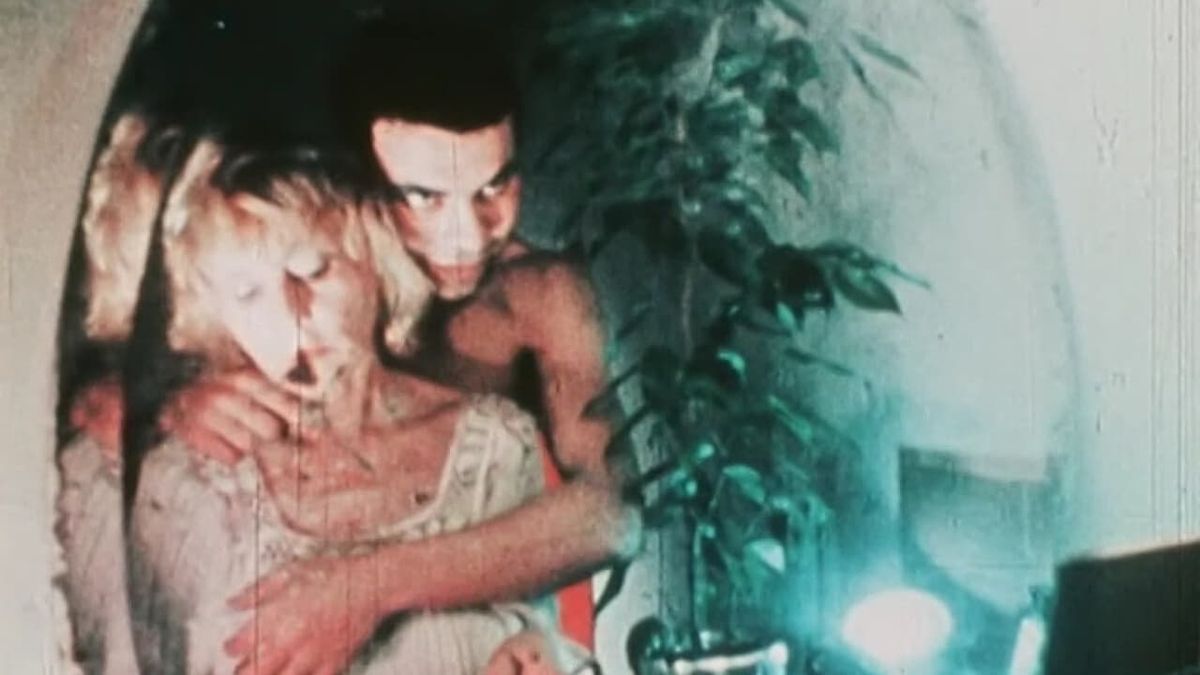
______________
Gillies Mackinnon Hideous Kinky (1998)
‘“Hideous Kinky” is neither hideous nor kinky. It’s also not terribly interesting. The film, directed by Gillies MacKinnon and based on Esther Freud’s autobiographical novel, takes place in Marrakech, Morocco, in 1972. This was a time when many people, including rock stars like Jimi Hendrix and Eric Clapton, retreated to Marrakech in order to “find themselves,” or whatever it was the hippies were doing in those days. Flower child Julia (Kate Winslet) is among this crowd, living out a day-to-day, rootless existence there with her two young children, Bea (Bella Rizza) and Lucy (Carrie Mullan). “Hideous Kinky” will probably be a nostalgia piece for those who participated in the hippie movement of the early ’70s, but there’s little else to engage anyone who can’t relate to hitchhiking through Marrakech.’ — Eric D. Snider
Trailer
*
p.s. Hey. ** Jack Skelley, Jackpan! Thanks for looking at them. And listening, duh. Awesome about the FOKA shebang success, and enjoy some rest. Yeah, I hate promoting my stuff. I’ve learned to walk through it. That’s probably half the reason I only have Facebook. But, yeah, the meeting people and finding out that people do like your stuff and who does is a big gift. Tips the balance ultimately. I saw Mr. Moore for coffee yesterday, so that part of your hope is accomplished, and I’ll look at art with him today, and I will most assuredly pass along your hey. Congrats in all caps! Love, me. ** Dominik, Hi!!! Among the most liveable, that’s an accomplishment. I wonder how France does. Seems pretty liveable to me. I turned down the volume on my phone, and now my ear’s fine. That’s funny, Zac is currently in the middle dog sitting for his dad in California for two weeks, but I don’t think it’s a mansion, although it is out in the woods, I think. Love making people who love Proust stop telling me I have to read him, G. ** _Black_Acrylic, Howdy. Mm, thanks for helping me stick to my ‘Oppenheimer’ avoidance plan. ** Bill, Hi, B. Yeah, that Nauman is a stone cold classic. ‘Technically accomplished, but bloated and bombastic’ is Nolan’s bread and butter from everything I’ve seen. He’s like the Emerson, Lake, and Palmer of filmmakers. ** Steve Erickson, Hey. Everyone, Mr. Erickson’s brain has taken on the task of reviewing Carly Jepsen’s new one THE LOVELIEST TIME here. Yes, I read about the multi-director thing with Noe and whoever else. I think it’s about to show here somewhere. Thanks for the Christian Marclay on Night Music link. I haven’t seen that, but soon will. I believe they are the equivalent of giant smartphones, yes. I heard about the arrival of high heat upon your hood. If there was such a thing as an air-conditioner hat, I’d buy it for you, if it was affordable. ** ANGUSWHERE (HAVE YOU BEEN!!), Well, well, well! There you are! Hi, Ryan, awesome to see you after too long. I’m good. We’re on a short editing break with the film, but it’s going really well. Okay, your video sounds great, obviously, and I’m glad you successfully ditched its problematic accoutrements. Greatest luck with the album submitting too, again obviously. Excited to hear it eventually. You sound very revved and inspired, which is beautiful. Yay! Paris (and I) await. Take amazing care until next lucky time. ** Nasir, Hi. Nice, crash that shit. I think you’re right about Friday. It’s the entrance/exit day. Ideally, I’ll do the opposite of relax today, but we’ll see. Yes, I’ll get my brain detoxed of work-related mutations and read your piece soon. ASAP. What are you doing this weekend? Specialness, I hope. ** Tea, Hi. Ah, so that’s what you got you started. ‘Bully’, I mean. I wonder if Keanu himself didn’t shower for days in order to fully inhabit his character. Probably, right? It’s probably murderously hot in Vegas right now, so there’s that reason for you to celebrate, unless it’s murderously hot where you are. I am curious to take a gander at that new dome thing. ‘Enter the Void’ and nausea are probably not a good combination, so be sure. I’m going to eat the most amazing pastry I can find today in honor of your b’day weekend and christen it ‘Tea’ and wave it in the air in a celebratory manner before I destroy it with my stomach acids. ** Right. I have restored, updated, and expanded the blog’s old Day celebrating the godlike filmmaker, actor, dude, (and my own personal big hero) Pierre Clementi for you this weekend. Please take advantage, thank you, and see you on Monday.




 Now available in North America
Now available in North America 
Pirre Cleenti is an axiom of the cinema. I ove him in all films but especiaally “La Cicatrce Interieure” and “Porcile”
He rportely died of le SIDA,
One of my favorite filmmakers, and one who I’ve always been happy to see you champion on here. Keep up the good work DC ❤️❤️ – long time reader b lipkin
Hi!!
Thank you for the weekend treat!
Love was weirdly close to reality then. Even if Zac isn’t in a mansion but in a house out in the woods. (Which instantly makes me think of the beginning of some horror movie, but maybe we shouldn’t go there, haha.)
Oh, no. How annoying. I’m sorry they’re bugging you with Proust… Love telling me what I dreamed because I can only remember that there was a guy called “Donald Pergoll” in it – and I have no idea who he is, Od.
Monsieur Clementi is definitely a favourite of mine. The Designated Victim seems like it could be a secret giallo so I’m definitely keen to see that one.
The new Aphex Twin EP came out this week. It’s very him and I think it’s very good.
I lived in Los Feliz at Hillhurst and Prospect for many years. So many memories of the Derby, Dresden/Marty and Elaine, Fred 62 and Spaceland/Tangier. We are putting the finishing touches on the DC zine – it goes to print next week. Ask Any Buddy was fantastic! Kudos to Elizabeth Purchell for a riveting romp through late 60s/70s gay porn.
@_Black_Acrylic_
Thanks for the heads-up on RDJ dropping a new one. Been catching up with him. Only just got into Syro. I think my last Aphex Twin record was… (does the math) –lawd, Analord.
@ Dee Kilroy, he’s been there for me since my teens in the 90s. I’m happy that he’s coming back strong.
Same. Sadly, like a few artists, he became one I drifted on. So many discographies, too little shelf space. Because I’m one of those losers who lives in his CD collection.
Good to spend the weekend with Pierre Clementi again. I’ve only seen a handful of his films, though they include some of the more bizarre ones like Porcile, Sweet Movie, and Blue Scoundrel/Rascal.
Comparing Nolan to ELP is spot-on! Ha.
Saw the new doc on Midnight Cowboy, inspired by Glenn Frankel’s book. Pretty enjoyable, though it really rambled badly near the end. Frankel’s book included a number of hilarious quotes from John Schlesinger, which were understandably not in the doc (they mostly used recordings of Schlesinger, and there weren’t a lot of those).
Bill
Hi, Dennis!!
How are you? How’s the film going? I’m sorry I haven’t been in touch for a while. I wanted to tell you that I will be visiting Paris from the 21-24th of August. Will you be there? It would be lovely to hang if you’re not too busy. I hope you’re doing great and that summer is treating you well with no heat waves.
Much love,
Montse
Friend! I have really interesting thing to share, yes!
hmm oh I went a place called Jonny Luke’s and had a really good avocado sandwich. If you ever pass this area (which I don’t recommend since this place sucks) you should eat there!
Interesting thing to share: I was inspired by this guy who sculpted Jackie Chan on YouTube and I’m going to prepare to make a sculpture of Jimi Hendrix’s head I got really pissed because the cartoon punk creature I made named Scully got decapitated and I have tried putting him back together but he kept cracking so I’m going to try and make slippy (slip, a dillution of 70% water and 30% clay) Slippy sounds cooler because its like that one 90s trance song. You use it to reattach broken clay pieces. I’m going to hang out with some friends Wednesday. I have been described as mysterious by them and I don’t really want to be mysterious. I want to be there ya know?
Whew. I went on a five mile walk to the dollar store to get some Tupperware to put my clay in and my face started stinging and I was like, wait am I getting sunburn?! I’ve literally become a vampire that I haven’t gotten that much sun in a bit.
How was ur weekend? Oh catch one of the bats and then mail it to me with a little tuxedo >:D
https://www.instagram.com/p/CvV5SViO2lf/
Heres the unfinished Scully btw! Dont look too long, he’s shy! For the most part at least. When I fix him I’m going to add a mohawk made out of wool and then attach it onto him. He’s a very sweet boy! (Just mind the deformities)
I enjoyed the Pierre Clémenti day. I will try and see some films I do not know about. Like Zoo Zéro I will watch it now after I post the message. This girl was in the Grillet film Eden and after
So the thing is… About those experiments. I like the sentence ”Omnipresent, on top of it” The thing I do is opening threads to the past, using phrases like ”I go back to this day to re-write my story” or ”like every day is the same” motif sentence I am spiritually in many places I have been in the past for inspiration, so I feel very open for lines and poems to come
I try as I walk to be not so attached to the ground like when I was younger but in places I have been to and will be in future too. I do tricks like getting into states of mind like – The boy in the couch, the boy in that window (I do this looking at different windows of buildings and say ”I could be boy in that window”) and many more So I transform bit more every time around these ideas and lines or poems come…
I want to be as open as possible because I was in complete block for many years, and now I won’t let nothing fall to the ground as we say in Greek…
I have opened in a way that maybe invites other ideas as well like ”The divination game that tells me truth” I would love to tell you about it… I went to a specific tree and did that again and again
I don’t know if it’s mine, did you ever think about having inside us things that are of other source, not in a copy way but totally caught gathered by osmosis? The source remains unknown, could be another person that was near or fictional character even. Maybe it is truly mine?
Yesterday I was walking and I had light thought of fireworks moment similar to the one in Permanent green light, just random thought and after max one minute fireworks started opposite of me and my eyes started burning and I came up with the line ”Wish that gets made off-handed comes true” and I made the sentence motif saying it again and again as I was walking. I was so happy because I used to think of that when I was young boy, indirect thoughts having better change to come true so I feel open and inspired. Repetition also one of the most inspiring techniques I love to repost drawings many times and repeating lines
I hope all these make sense. Did you have cute weekend? Are you still in break from editing? is it a big part of it done? Good vibe from Creta <3
I spent my weekend taking pictures of whatever and watching Columbo in bed. I don’t know about specialness but it was fun. What about you? I’ve heard you talk about Pierre Clémenti before, it was really interesting. I definitely need to educate myself more! Have a lovely day and week and rest of your life.